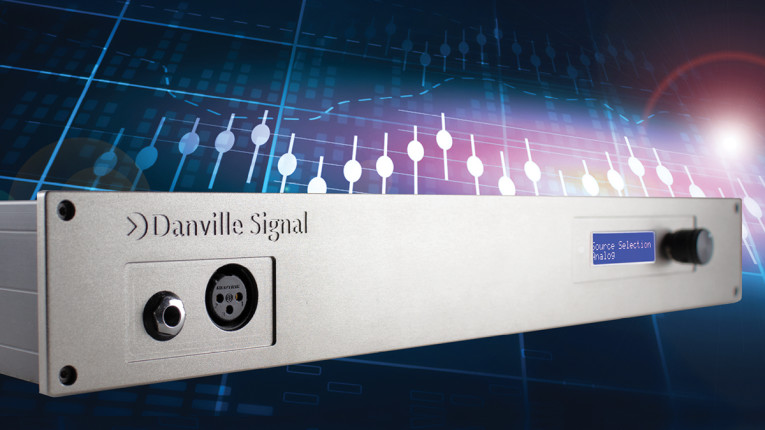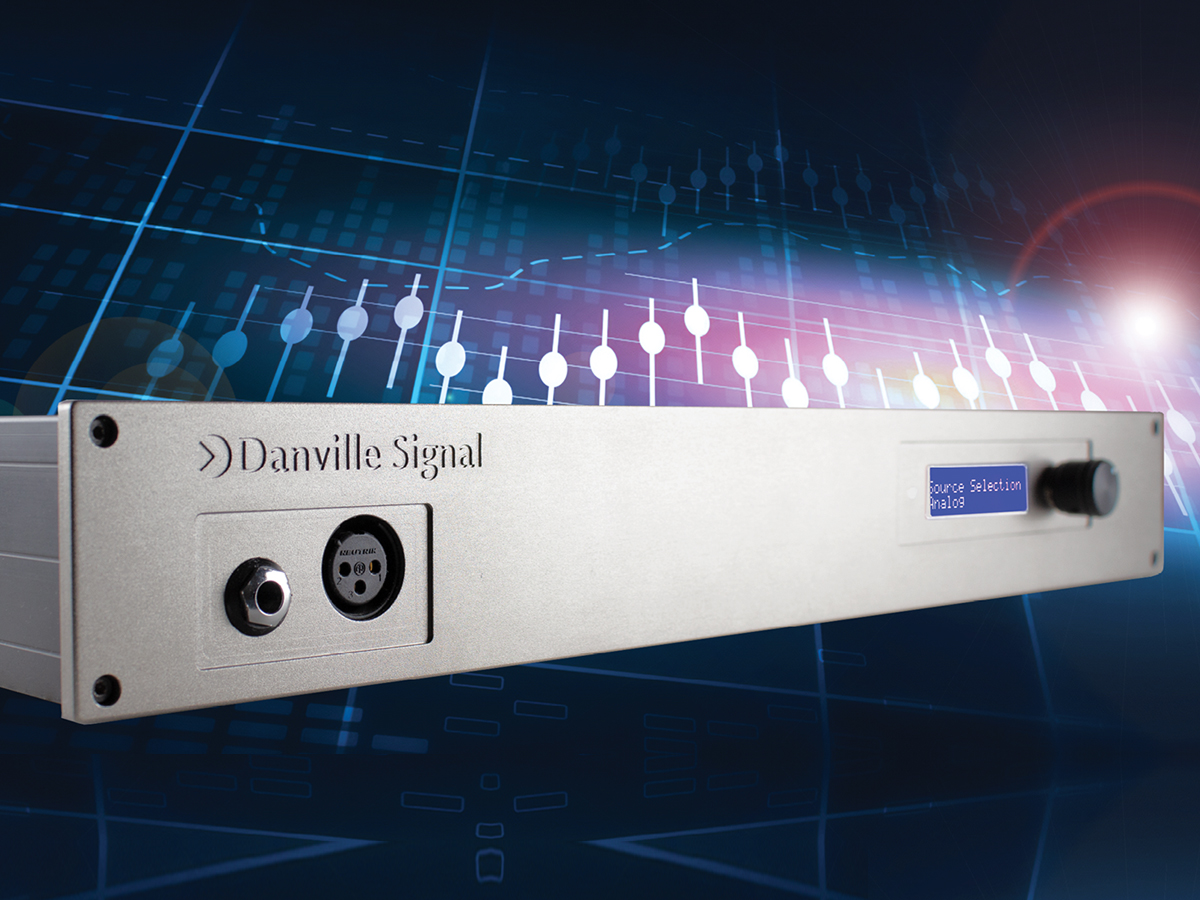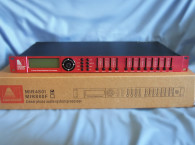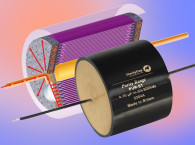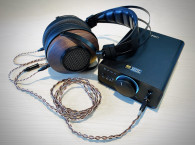Have you ever had the opportunity to create something that is truly new? As a designer of hundreds of different products over many years, I can honestly say not very often. Most of our products are tweaks to existing ideas that are built on the knowledge that we gained from our own earlier designs and more importantly, from others who perhaps share our passion.
This is the story of Danville Signal’s dspNexus DSP Audio Processor. Simply put, the dspNexus combines the traditional role of a modern preamplifier (control center) with a powerful DSP crossover. As much as many of you may want to delve into the engineering details, this article will focus on the journey and the genesis of the dspNexus. I hope that many of you will have a chance to further investigate the dspNexus and draw your own conclusions of whether we accomplished our goals.

The Journey
I don’t think I can tell the dspNexus story without sharing a little of my personal background and later the founding of Danville Signal.
In my youth in the mid-1970s, I joined a small team of gifted audio enthusiasts not so different than the audience and contributors of audioXpress. I was a sophomore with an electrical engineering major. We started by modifying Dynaco preamplifiers and power amplifiers, and we had some commercial success. By the end of my junior year, we started designing more original circuits. At this time, I invented the split passive phono preamp, which was later patented. Modifying existing circuits is like covering songs, creating new circuits is more like writing your own material. Besides learning a bit of circuit theory, I think the other skill I learned from this collaboration was the ability to listen critically, which is essential for any good audio designer.
In the early 1990s, I designed noise reduction products using Analog Devices DSPs. I think this was a fairly natural transition for an analog engineer since the math is not so different and the applications often overlapped. In 1998, I founded Danville Signal Processing with the intent of building audio signal processing products using Analog Devices DSPs. I designed my first SHARC-based DSP design in 2000 with a first-generation Analog Devices’ floating point DSP. In my view, the SHARC is the gold standard of DSPs for audio processing.
Of course, a village with one hut is not much of a village, so now the story moves to our team, since Danville Signal is no longer a solo engineer and a few subcontractors. Danville now has an engineering department so our products evolve from a collective effort. We also manufacture all of our products on our own internal automated line in Cannon Falls, MN. This flexibility really helps when it comes to creating new products.
Danville Signal’s customer base has traditionally been aimed at other manufacturers, so you may not be well acquainted with our products. Since our customers are the brand, we are more like “Intel inside.” Nevertheless, we have likely infiltrated your audio world. Our DSP crossovers have been inside popular studio monitors for more than 10 years, which means some of your music content was mastered with our products. We have also provided special mastering electronics for vinyl pressing, DSP modules for beam forming in large acoustic spaces, DSP modules for a SOA CD player, and DSP crossovers for high-performance consumer loudspeaker systems.
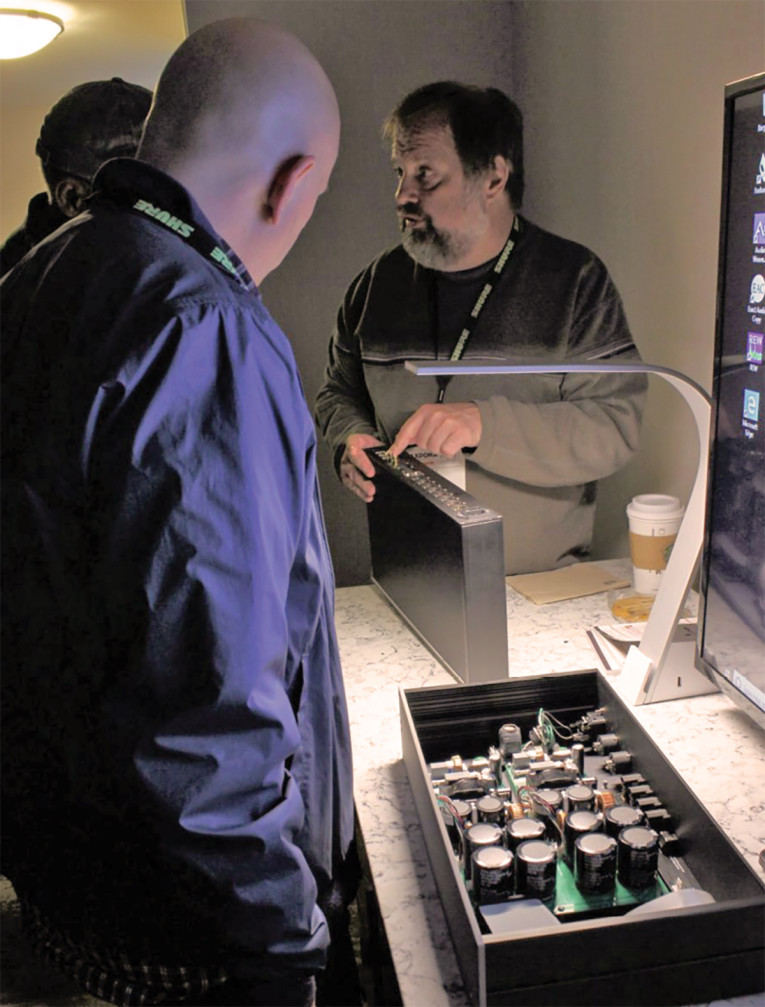
DSP and the Digital Revolution
It should be clear to just about everyone that digital audio is the new normal. Most of the content that we routinely playback is either stored on a local music server or streamed from an Internet source. We might also grab content from a TV or phone, which usually is available in a digital format. This means that your playback system will need at least one DAC.
Now I will make another assertion: With the possible exception to cost, there is no advantage to a passive loudspeaker crossover. This has been known for a very long time. I have a video on the Danville website that discusses this issue and you can find many other presentations that present similar arguments.
So if you accept the previous two assertions, I will claim that a good DSP-based active crossover is superior to an analog active crossover for the following reasons:
- Content is probably already in digital format
- Filter complexity is rarely limited given powerful DSPs
- Optional FIR filtering
- Time alignment is easy and usually desirable
- Parameters are software driven and easily adjustable
- Stability of performance
- Look ahead limiters are possible
- Danville Signal and the large-space professional acoustics market has embraced this idea for quite some time. From their perspective, the ability to steer arrays, align systems in time, and so forth are compelling arguments for DSP.
The small-space professional market (recording studio monitors) has now also embraced DSP crossovers as a desirable feature in most high-quality studio monitors. In this market, most speakers are already powered, so adding a DSP internally does not change the form factor.
The high-end consumer market has been the slowest to adopt, but this is changing. I remember inadvertently meeting a reviewer from Stereophile in an elevator at CES around 2014 or 2015. He asked me what we did and I said: “DSP Audio.” His response was, “You must be very busy.” This was clearly a change from early years where DSP was more suspect. I think the tipping point started around 2016 when consumers started asking speaker manufacturers if their products use DSP crossovers.

The dspNexus Idea Takes Form
Danville had been manufacturing a basic DSP box for several years called the dspMusik 2/8. It started out as very simple box that had selectable stereo inputs: balanced analog, USB Audio Class 2, and S/PDIF. It had eight balanced audio outputs, making it well suitable for DSP crossover applications.
audioXpress highlighted it in an issue a year ago. Internally, it had a SHARC DSP that was running DSP Concepts’ Audio Weaver, a powerful GUI-based design tool that lets you drag and drop optimized DSP modules to create the signal processing needed for the DSP crossover and other signal processing functions. The strength of the dspMusik was that it was probably the most powerful and best sounding DSP crossover available at the time. It used top performing AKM ADC and DACs.
One day I was visiting Rich Hollis of Hollis Audio Labs (HAL). Rich makes some very good planar magnetic line arrays that used a dspMusik as the crossover. We were invited to a demo at one of Rich’s local customers. This system sounded great! Not surprisingly, it had a stack of excellent power amplifiers, fat expensive cables, and a music server all residing in a very nice room. In the middle of everything was this humble dspMusik 2/8, running the whole system. It was clearly time to rethink the dspMusik with a fresher approach.
Rich and I started defining what would ultimately become the dspNexus platform. The dspNexus target market is primarily speaker manufacturers and serious loudspeaker DIYers who want to create the highest performing loudspeaker systems. You really can’t do this without a modern active DSP crossover. This means that a loudspeaker manufacturer using this approach needs a solution that is easily tailored for the specific requirements of the target loudspeaker. Most dspNexus systems sold to end users will be preconfigured for a specific brand and model. We would supply DSP Concepts’ Audio Weaver.
We envisioned a product that would never apologize for its audio performance. This suggested that most key components would be constructed as replaceable modules. Today’s best DSPs, ADCs, and DACs are tomorrow’s second best. To this end, it also meant that each module would have read-back capability so that as new modules are created, we could automatically determine what was plugged into the motherboard and adapt accordingly. This also required the product to be software upgradeable without special programming tools.
It was clear that we needed to upgrade the enclosure to be much larger and more attractive. In the high-end audio market, there has been a bit of an arms race to make enclosures with incredibly thick front panels and shiny mirrored surfaces. This greatly increases manufacturing cost, without any benefit to performance. We thought the dspNexus needed to look good and professional, but we weren’t aiming for bling.
In many ways, this part of the conceptualization process and later the actual implementation was the easy part. We already knew how to make the DSPs, ADCs, DACs, and supporting circuits work well. This area is our company’s core competency after all. If this was our entire goal, we would have just repackaged a dspMusik, but we really wanted to rethink how to make a preamplifier/control center that would be relevant to modern stereo systems.
In today’s world, audio sources come from many places. We settled on the following input sources as a reasonable set to accommodate most needs:
- Balanced Audio Inputs
- USB Audio Class 2
- S/PDIF
- Bluetooth with aptX HD support
- Wi-Fi
- Ethernet
We decided to add a headphone amplifier because it was clear that sometimes people want to listen to music when others may not want to share their experience (perhaps they’re sleeping?). The headphone amplifier needed to compare well with other high-quality headphone DACs. Since most of the supporting circuits would already exist in the dspNexus, this was really just a matter of creating a small power amplifier with appropriate signal routing.
Perhaps the biggest departure from a traditional preamplifier is that we decided to integrate a Raspberry Pi 4 (RPi4) small board computer (SBC). The RPi4 has very broad support and is likely to be available for many years. This made it the SBC of choice over similar devices.
By adding the RPi4, we opened the door to running applications in the dspNexus. This could be for speaker measurement programs, music server, or room correction/bass management. It also could function as a bridge for external Wi-Fi or Ethernet sources. In the dspNexus, a local SHARC DSP does the main signal processing, so the RPi4 is just another peripheral.
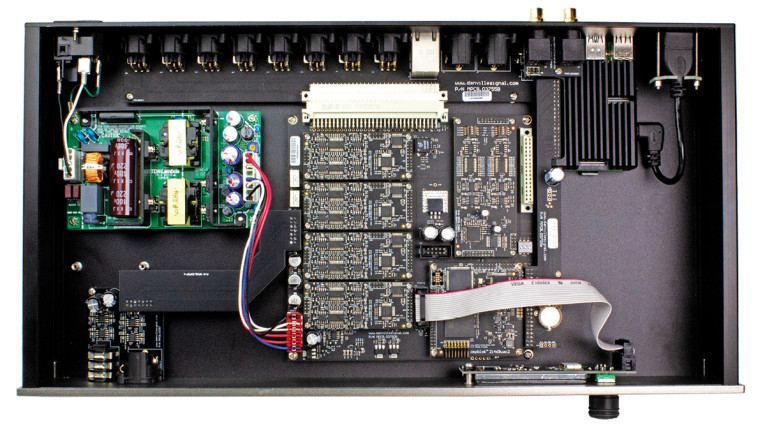
Many customers are going to make speaker measurements, so we added a phantom-powered microphone input. It is also possible to measure delay from each DAC to the microphone. This allows relative time delay to be measured in a customer environment for aligning subwoofers, since the placement of a subwoofer would be unknown until installation.
Frankly, the only feature we added that I think might be heresy for some users, is that the ADC module can be configured as a phono preamplifier front end. The differential input impedance is 47kΩ. It also has load capacitors that can be switched for cartridge loading. This sets the stage for a DSP phono preamplifier for moving magnet cartridges or moving coil cartridges with an external transformer or pre-preamplifier. In principle, this opens the door to pop removal since we can look at the output of the phono cartridge before equalization and delay it a small amount. This would allow the pop to be removed before it was too late to snip out. Regardless, it will be fun to play with a DSP phono preamplifier implementation.
The first dspNexus units are shipping to earlier adopters. We are excited about the dspNexus and its unique set of capabilities. Since it uses modular construction and is software upgradeable, the dspNexus will continue to improve as we move forward. Get your hands on one and let us know what you think as well as what you’d like to see in future upgrades.
This article was originally published in audioXpress, November 2021.
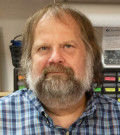 About the Author
About the AuthorAl Clark is the co-founder and CEO of Danville Signal Processing. As one of the four founders of Van Alstine Audio Systems, Al launched his career 45 years ago as an analog engineer. This company made high-end preamplifiers and power amplifiers in the mid-1970s. He started designing DSP-based products with first-generation DSPs in the late 1980s and has since created more Analog Devices’ SHARC-based DSP boards than anyone else in the world. He has a Bachelor of Electrical Engineering degree from the University of Minnesota and is a life member of the Audio Engineering Society.
